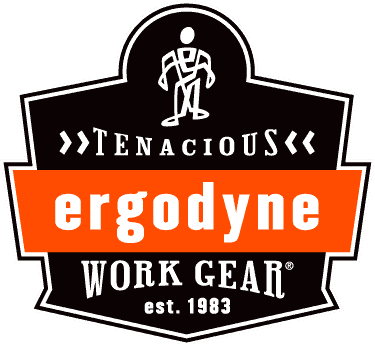Sun Protection 101: A Complete Guide to Skin Damage Prevention
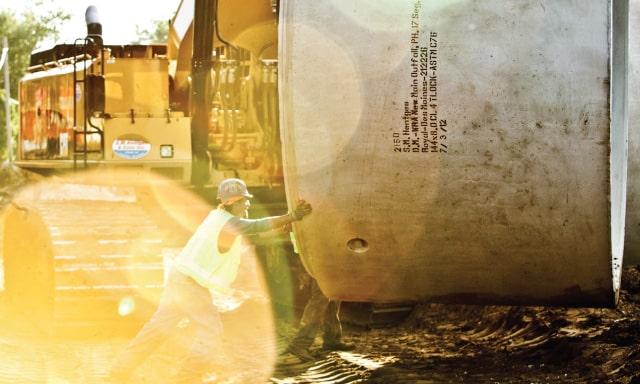
We’d like to take a moment to talk about the sun. You know, the life-enabling center of our universe and a muse for everyone from The Beatles to Sheryl Crow. But for all it giveth, it taketh away—and those who do not respect the sun’s almighty powers may ultimately find themselves in a world of skin damage.
IT’S TIME TO GET SERIOUS ABOUT SUN PROTECTION
Skin cancer is the most common form of cancer in the United States with cases increasing by nearly 10% each year. One in five Americans will develop it in their lifetime, making it more common than all other forms of cancer combined.
The likelihood of developing skin cancer for those who work outdoors is 3.5 times higher than for those who do not. The sun damage risk on worksites is so high OSHA has identified UV as a carcinogen. With skin cancer expenses exponentially increasing (more than $8 billion spent annually), treatment costs are detrimental to both workers and their employers.
That’s all pretty staggering, but what really causes it? 90 percent of skin cancer diagnoses are directly attributed to long-term overexposure to the sun’s ultraviolet (UV) radiation — specifically, sunburn. Redness, heat and pain are the body’s attempt to repair skin cell DNA that has been mutated by UV photons. A long-term build of unrepaired cells is what can ultimately become skin cancer.
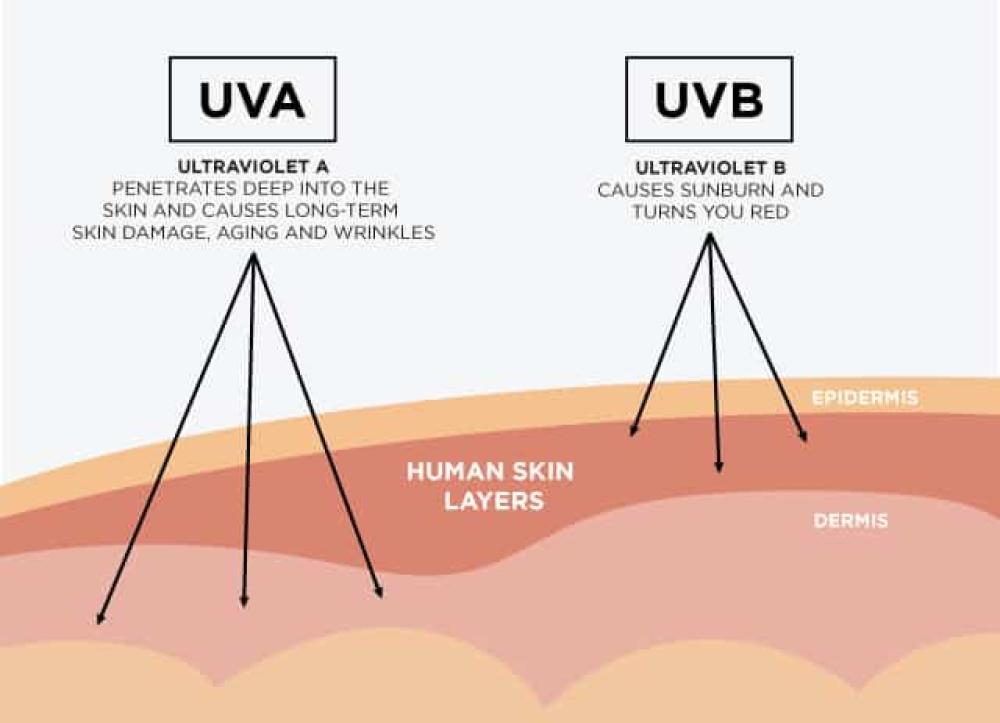
SUN DAMAGE PREVENTION
Now for the good news. Though skin cancer is the most common form of cancer, it’s also one of the most preventable. A simple combination of sunscreen, protective clothing and shade can drastically decrease the risk of cancer and skin damage. And for those still thinking “Whatever, man, my suntan is a badge of honor” after reading the above, you are not cool — you are stupid. Not sorry.
And the experts at OSHA agree, recommending the following for sun-exposed workers:
- Cover up with loose-fitting, long-sleeve shirts and pants
- Use sunscreen with an SPF of at least 30
- Wear a wide brim hat to protect neck, ears, eyes, forehead, nose and scalp
- Wear UV-absorbent sunglasses
- Limit exposure – UV rays are most intense between 10 a.m. and 4 p.m.
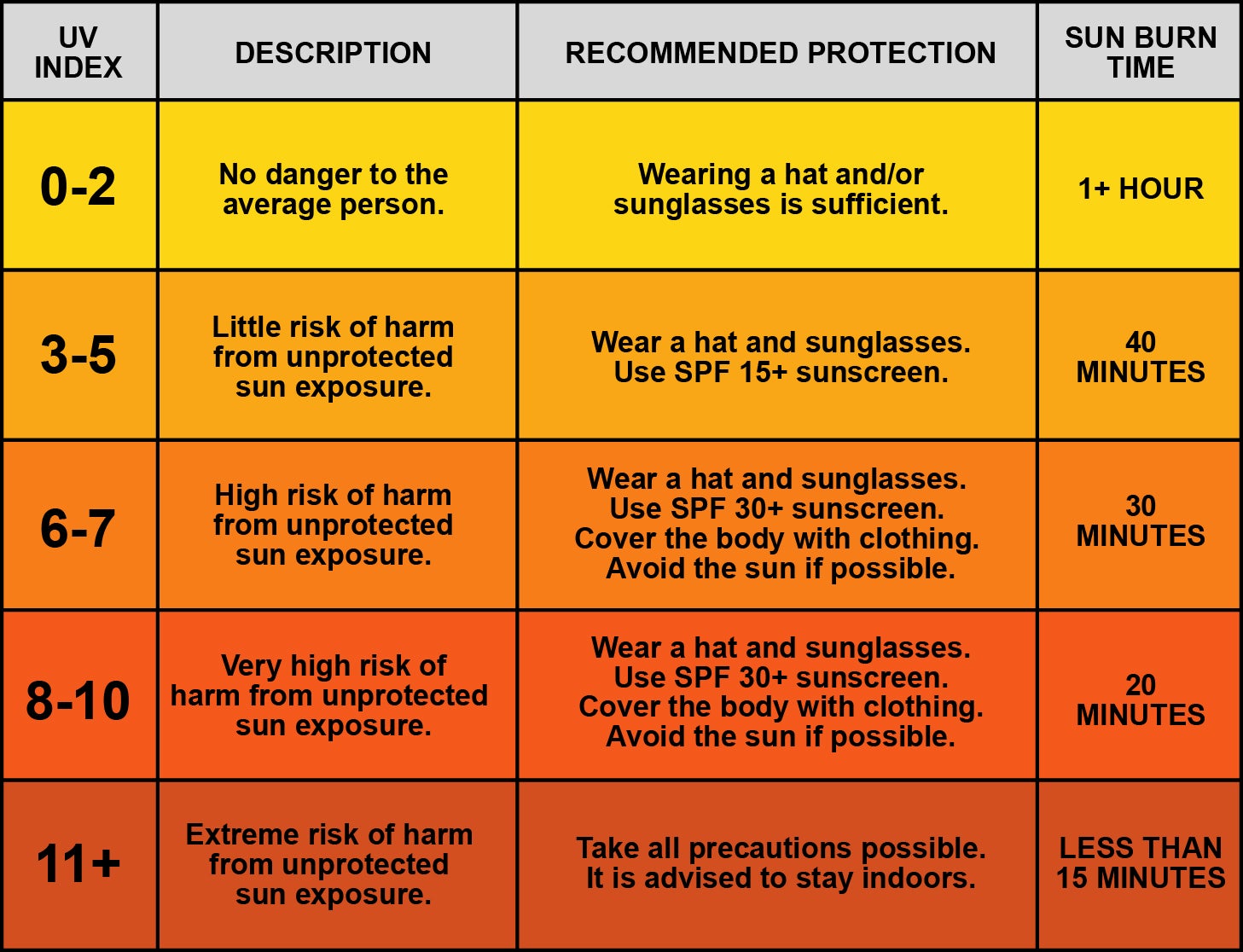
SUNSCREEN
We know, you’ve heard this from your mother before. But, the fact of the matter is, sunscreen is the most important measure for proper sun damage prevention. To understand how it works, we must understand what Sun Protection Factor (or SPF) means. Varying SPFs block incremental amounts of UVA and UVB rays, with the number representing how many times longer a person can remain in the sun without burning. What’s the difference between the two? UVA rays penetrate harmful photons deeper into the skin to cause premature aging and immunologic problems, while shorter UVB rays are what damage DNA and give way to skin cancer. Not all sunscreens protect against both, so be sure to look for ones labeled “broad spectrum.”
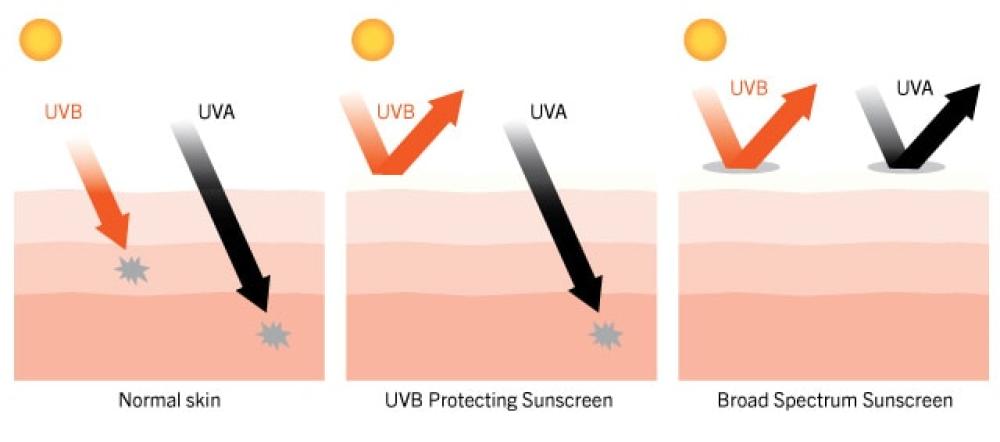
Sunscreen should be thoroughly applied to exposed skin prior to going outside and reapplication should occur every two hours. The Center for Disease Control recommends all skin types use at least 15 SPF, which blocks 93% of UV rays. The fairer your skin, the higher SPF you should use — with SPF 50 blocking up to 98%. Luckily for those who don’t like the feel of traditional lotions, sunscreen also comes in easy-apply spray.
SUN PROTECTIVE CLOTHING
Clothing labeled with a significant ultraviolet protective factor (UPF) is another crucial (and relatively easy) preventative measure. UPF differs from SPF because 1) it’s for clothing and 2) it always protects from both UVA and UVB rays. The rating scale is a bit different as well, with the number directly correlating with the amount of UV it blocks. For example, 50 UPF means only 1/50th of the sun’s rays will pass through the fabric. UPF clothing comes in just about every style these days and, for those who really want to beat the heat, there are more advanced options with activated cooling technology. Unobtrusive UPF headwear, bands, and sleeves are worthwhile additions for any outdoor worker.
POLARIZED SUNGLASSES
And jeepers creepers, don’t forget about those peepers. While ocular melanoma is not associated with sun exposure, UV ray damage can increase odds of developing eyelid cancer and serious eyesight-impairing conditions such as cataracts and macular degeneration.
According to the American Optometric Association, sunglasses should block 99-100 percent of UV rays. Polarized lenses can offer even more protection by reducing glare and eye fatigue around water, snow and other bright environments. And with new generations of safety glasses looking and performing more like athletic eyewear, you’ll look and feel good using them.
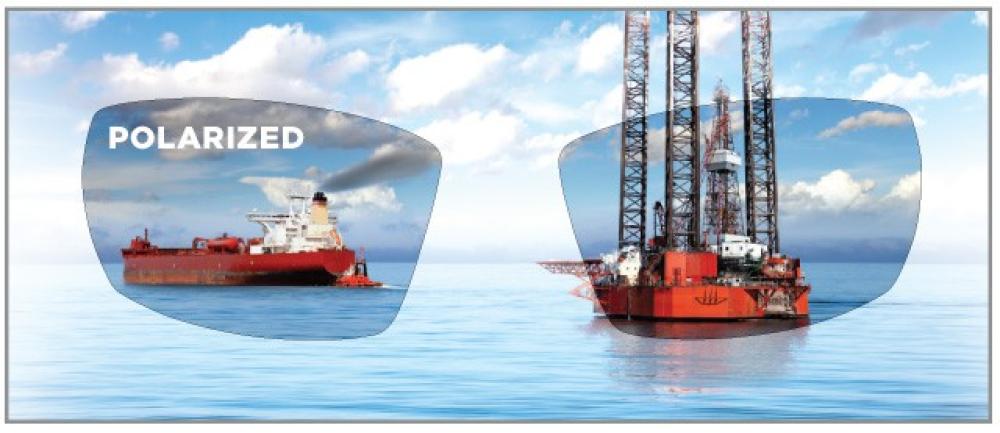
SHELTERS AND SHADE
In the case of sun protection, throwing shade is a good thing. Blockage of direct sunlight should be incorporated whenever possible on worksites. Shade should be as close as possible to where work is occurring, substantial enough to cool down the body’s heat level, provide adequate space for all resting employees and water should be readily available. If your site lacks built-in refuge from trees or buildings, create it. From large pop-up shelters to light-blocking umbrellas, there are plenty of quick and easy-to-deploy options available.
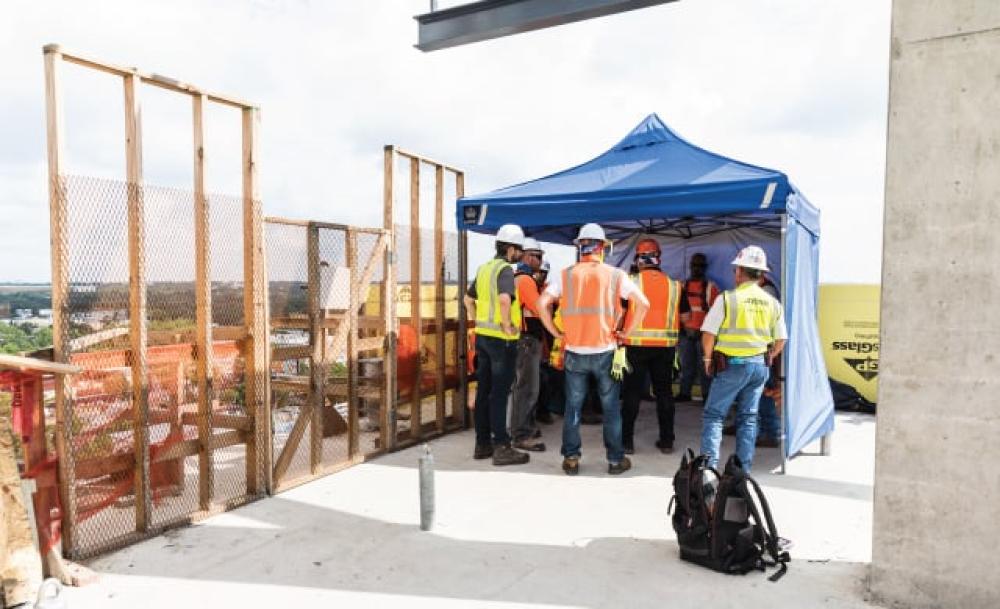
EDUCATION AND TRAINING
It’s up to you to take over where Mom left off. The danger of sun exposure goes beyond the occasional sunburn. Educating your crew on proper preventative measures can significantly reduce their risk of developing skin cancer and severe skin damage, saving both lives and money. Knowing what we know, there’s really no excuse not to.
RELATED READINGS
- Toolbox Talks: The Importance of Shade on the Worksite
- How Polarized Lenses Take the Sting Out of Sunlight
- Preventing Heat Stress at Work: Your Guide to Heat Stress Risks & Solutions
